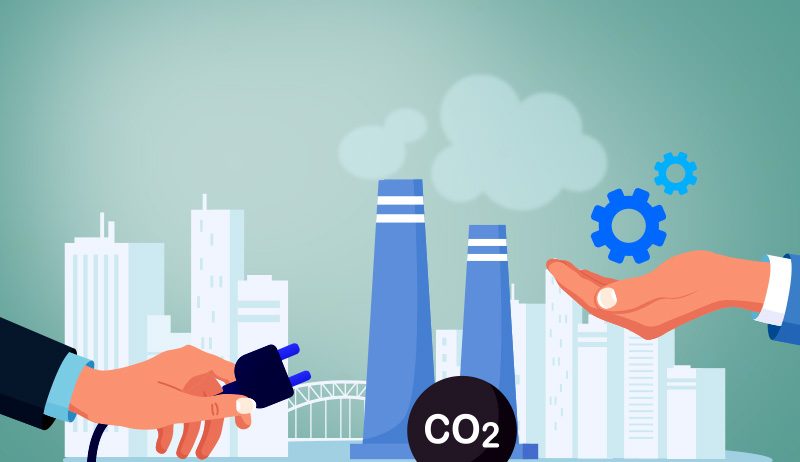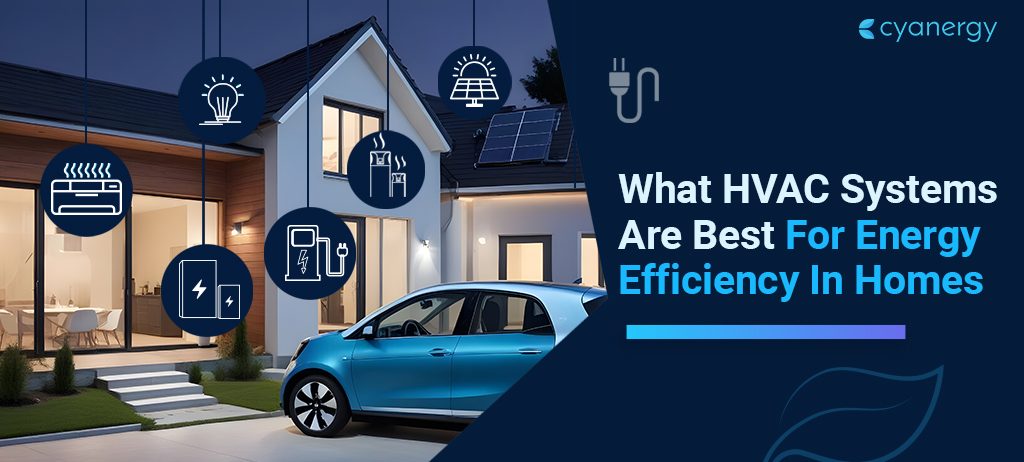The electrification of various sectors, such as transportation, heating, and industrial processes, is becoming increasingly important as we move toward a more sustainable future.
However, many can question whether electrification actually reduces carbon emissions or not. And does it emphasise its role in ensuring energy efficiency, reliability, and sustainability? That’s what we will try to find today.
So, can electrification reduce carbon emissions in Australia? The short answer is YES! Also, there’s much to understand about electrification in Australia. There are many dynamics we need to unfold. Let’s get into it, then.
What is Electrification?
Electrification means changing from using things like coal, oil, and natural gas to using electricity for power. This switch can help cut down on the pollution that comes from transportation, buildings, and industries.
These three together make up over 65 per cent of all the greenhouse gases produced in Australia. It’s crucial to deal with the pollution from these areas if we want to make the economy cleaner and lessen carbon emissions.
This explanation looks at how using electricity instead of fossil fuels can lower emissions. It also talks about the possibilities and challenges of making this switch in transportation, buildings, and industries and suggests different ways the government can encourage it.
What is Carbon Emissions?
Carbon emissions, or carbon dioxide (CO2) emissions, refer to the release of carbon dioxide gas into the atmosphere.
These emissions primarily result from the combustion of fossil fuels such as coal, oil, and natural gas, as well as from various industrial processes and deforestation activities.
When these substances are burned or oxidised, they release carbon dioxide, a greenhouse gas, into the air. Greenhouse gases trap heat in the Earth’s atmosphere, contributing to the greenhouse effect and global warming.
Carbon emissions are a significant driver of climate change, leading to rising temperatures, sea level changes, and other environmental impacts.
Efforts to address climate change often focus on reducing carbon emissions by transitioning to cleaner energy sources, improving energy efficiency, and implementing sustainable practices in various sectors.
How Can Using Electricity Help Reduce Pollution?

In Australia, almost 35 per cent of electricity comes from clean sources like nuclear power and renewables, and about 35 per cent comes from natural gas. It is the least polluting fossil fuel.
So, technologies that use electricity generally produce less pollution than those that use fossil fuels directly. The electricity system is expected to get even cleaner as many states are working to increase the use of clean energy.
This means that using electricity will probably become even better for the environment in the future.
If policymakers want to make transportation, buildings, and industries cleaner, using electricity instead of fossil fuels might be one of the best options. There are different ways to produce electricity cleaner.
But it’s harder to find alternative options for making transportation and industries less polluting. Some alternative fuels for vehicles are cleaner than regular petrol, but they still produce carbon dioxide and other pollutants.
Hydrogen is another option, but it’s expensive and needs electricity to be made. Switching to electric technologies, which don’t produce pollution when used, would move most of the pollution to the power plants.
This means policymakers can focus on making power plants cleaner instead of dealing with many ways to drive vehicles and industries less polluting. The benefits of using electricity depend on how the electricity is produced.
In Australia, some places use mostly clean energy, while others rely more on fossil fuels like coal. The benefits might not be as good because making electricity from coal can create a lot of pollution.
However, these benefits could change in the future as the way we make electricity evolves.
Using electricity might not work the same way for every industry. Some industries already have technologies that can use electricity, but others don’t and might have a hard time switching.
How Can We Use Electricity for Everything?
In Australia, around 40% of the pollution comes from the machines in our homes and the cars we drive. Another 30% comes from businesses and their operations, including the use of electricity.
Suppose we replace all our machines that use fossil fuels with electric ones. In that case, we might be able to keep the temperature from rising too much.
It is essential for saving things like coral reefs and glaciers and preventing extreme weather that can harm our children.
But don’t worry, you don’t need to spend a lot of money right away. When your fossil-fuel machines, like cars or water heaters, stop working, that’s the time to switch to electric ones.
It might seem expensive at first, but in the long run, electric machines cost less to use and take care of.
Plus, as technology gets better, they will become even more efficient. By 2030, Australian families and businesses could save $5,000 a year by using electric cars, heat pumps hot water systems, and stoves powered by rooftop solar panels.
But how do we exactly Electrify everything? Let’s see:
Switch to Electric Vehicles

Electric vehicles are a good example. They are about 3.5 times more efficient than regular cars, and even charging them with electricity costs less than fuelling up a regular car.
Use Cyanergy’s Revolutionary Heat Pump and Aircon
When it comes to heating and cooling our homes, electric hot water systems are much better than other options like natural gas or wood fires. They save energy and money and keep us comfortable.
In places like Victoria, where heating is a big part of household emissions, using electric heat pumps can make a big difference.
Water heaters are also essential. Using an efficient heat pump with solar panels and a home battery can cut the cost of heating water by about half compared to using natural gas.
Electric Stoves
Electric stovetops are an excellent choice for cooking. They are quick, precise, and don’t pollute the air like gas stoves. Making these changes not only helps our wallets but also has a positive impact on the climate and our health.
Route to Decarbonisation
The path to decarbonisation involves utilising four key strategies:
- Reduction of energy waste
- Transition to 100% renewable energy
- Electrification and a move away from fossil fuels
- Reductions and offsets for non-energy emissions
The electricity system is set to play a central role in Australia’s decarbonisation efforts, mainly through a swift transition to renewable energy and the electrification of transportation, industrial processes, and buildings.
Currently responsible for 34% of the country’s greenhouse gas emissions, the electricity sector offers a cost-effective avenue for emission reduction as the costs of solar, wind power, and storage continue to decline.
Global estimates from BloombergNEF show substantial cost reductions in solar PV (87%), wind (63%), and battery storage (80%) over the past decade. Further projections anticipate a 70% reduction in the cost of solar panels by 2050.
How can Electrification Influence Homes and Business Spaces in Australia?
In Australia, electrification presents a transformative opportunity for both home and business spaces, offering a pathway towards sustainability and reduced carbon emissions.
For homes, adopting electric technologies such as electric cars, heating systems, and appliances can contribute significantly to minimising the environmental impact.
Given Australia’s commitment to addressing climate change, transitioning away from fossil fuel-powered machines aligns with national goals to create a cleaner and more energy-efficient future.
As technology continues to advance, the adoption of electric alternatives not only promotes environmental responsibility but can also lead to potential cost savings for households, making it an appealing choice for Australian homeowners.
In the business sector, electrification plays a pivotal role in aligning with Australia’s broader efforts to reduce carbon emissions.
Businesses can make strides toward sustainability by incorporating electric vehicles into their fleets, adopting electric heating and cooling systems, and utilising energy-efficient electric machinery.
This shift not only contributes to a greener and more eco-friendly image for businesses but also positions them to meet evolving environmental regulations.
Embracing electrification in both home and business spaces in Australia serves as a proactive step toward a more sustainable future, addressing the country’s ecological concerns while fostering economic resilience and innovation.
What Does This Mean for Australia?

In the future, more and more people in Australia are expected to start using electric cars. All traditional cars with engines using petrol will be replaced by electric vehicles by the year 2050.
We estimate that by 2050, there will be around 8 million electric cars on the roads.
If we really push for deep decarbonisation, by 2030, there could be more than 3 million electric cars in Australia. And we will reach 14 million by 2040.
The idea is that by 2050, almost all vehicles on the road will be electric, except for about 50% of the massive trucks.
In the first half of 2021, Australia sold twice as many electric cars as in the whole year of 2020.
Experts think this trend will continue because electric cars are becoming more affordable, with lower prices for batteries, more companies making electric cars, and support from governments.
What Does This Mean for the Grid System?
Making more things run on electricity, like cars and industries, will make the need for electricity go up a lot in the next few decades.
If Australia decides to become a significant exporter of clean energy by selling green hydrogen and steel worldwide, the demand for electricity could grow six times more than what it is now.
If most cars in Australia become electric, we might need about 100 terawatt-hours of extra electricity each year by 2050.
The critical thing to understand is that to make this change successful. We also need to improve how we move electricity from one place to another.
So, we’ll need more infrastructure, like transmission lines, to support the expansion of clean and renewable energy.
Challenges and Opportunities of Electrification in Australia
The electrification of various sectors in Australia presents both challenges and opportunities. Challenges include substantial infrastructure development, initial costs with electric technologies, renewable energy resources, and technological readiness.
However, embracing electrification provides significant opportunities, such as a substantial reduction in carbon emissions, aligning with climate goals.
Additionally, it offers a chance for Australia to enhance energy independence by investing in local renewable sources, fostering economic growth, and decreasing reliance on imported fossil fuels.
Striking a balance between overcoming challenges and leveraging these opportunities is crucial for a successful and sustainable electrification transition in the country.
Cyanergy For Any Electrification Needs
If you are looking to electrify your home or business, then look no further. Cyanergy is here for the rescue. Check out our heat pump and air conditioning page for residential usage. For commercial purposes, we have commercial solar, commercial heat pump, and commercial battery storage.







